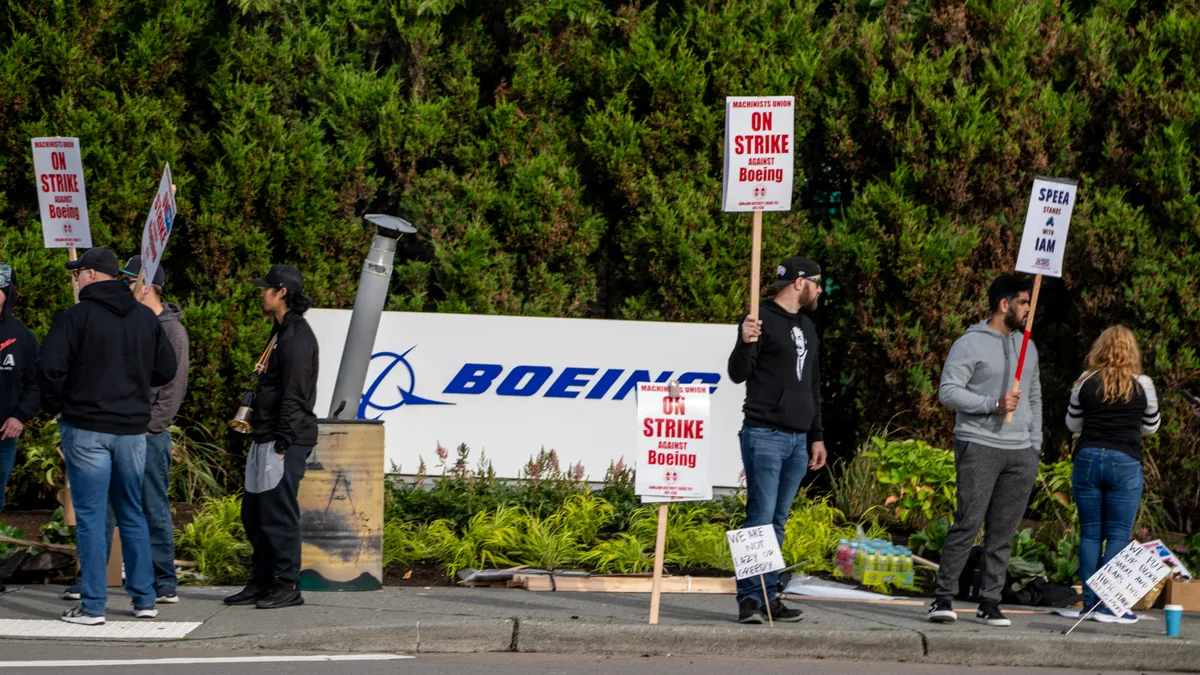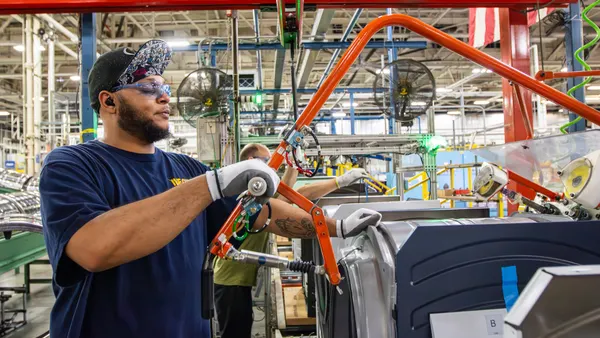Dive Brief:
- High-profile wins by unions in the past several months will probably reinforce a trend in labor organizing that, while harming profitability, may reduce employee turnover over time, according to Moody’s Ratings.
- The number of petitions to hold union elections surged 27% during the year ended Sept. 30, the highest level in more than a decade, Moody’s said, citing data from the National Labor Relations Board. Workers during the period won 73% of the votes for unionizing, a record since at least 2014.
- “We expect increasing union recognition and density will negatively affect employer profitability, but unions often bring lower staff turnover that could offset the higher labor costs they entail,” Moody’s analysts said in a report.
Dive Insight:
To be sure, only 6% of the private sector workforce is unionized, a share that has shrunk for decades. The proportion of both private- and public-sector workers in unions fell to 10% in 2023 from 20.1% in 1983, the first year of the data series, the Bureau of Labor Statistics said in January.
Yet unions in recent years have won high-profile disputes in the private sector, scoring limited but clear gains.
Most immediately, members of the International Association of Machinists and Aerospace Workers plan Monday to vote on a contract proposal from Boeing that was endorsed by union negotiators.
More than 33,000 IAM members will consider whether to accept a 38% wage increase over a four-year period, as well as concessions in retirement funding, job security and bonuses, the union said Friday in a statement. Workers rejected earlier contract offers and have been on strike since Sept. 13.
“In securing this agreement, IAM Union members have won an opportunity to ratify a contract that would set a new standard for their industry,” IAM Union International President Brian Bryant said in a statement.
“A contract like this would send an inspiring message to all workers in the United States who are seeking to join unions or who have been shortchanged by their employer,” Bryant said.
Labor unions have grown more assertive this decade, Moody’s said. Last year, the number of work stoppages involving 1,000 workers or more increased to 33, the highest level since 2000, according to BLS.
Organized labor has “won record contracts in traditionally unionized sectors (e.g., auto manufacturing) and is making inroads where unions have tended to be few and far between,” Moody’s said, noting gains at Starbucks and the food services industry.
“Workers' negotiating leverage may ease as the labor market cools, but a series of high-profile union victories coupled with the strongest public support for unions in nearly 60 years will likely embolden unionized and union-curious workers in 2025,” Moody’s said.
Unions use “monopoly power” over the supply of labor to gain a bigger share of profits, Moody’s said.
“But they also offer a platform for workers to voice their opinions on work processes and conditions, which promotes worker ‘voice’ as an alternative to ‘exit’ and reduces voluntary quits,” Moody’s said. Such influence “can be particularly meaningful in low-wage industries where turnover costs are excessive and union demand is likely to persist,” according to Moody’s.












